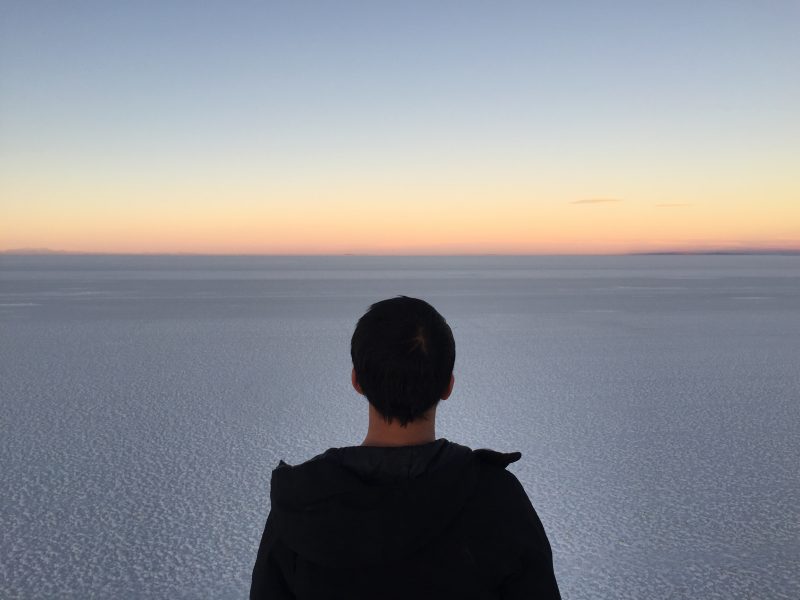Finding Yourself Within the Paradox of Intent
Posted on October 30, 2017
Sakura’s in bloom in Kyoto during my time there
During my TransD experience thus far, a conundrum has fallen upon me that leaves me questioning my place here. It’s something I continue to try and make sense of, and perhaps a written meditation will lead me closer to the light at the end of the tunnel.
This program has been overwhelming to say the least. We talk about the large systems that comprise the reality we inhabit and the Wicked Problems entangled within these systems. The messiness of it all can start to feel like we’re trying to boil the ocean. How does one tackle a wicked problem when “at best they are only re-solved – over and over again.” [1] It’s hard to not feel like Sisyphus pushing up this boulder on a never ending path. A seed begins to take root when we discuss the concepts of Emergence and Open Source though.
Through Emergence, a few simple rules can develop enormous complexity. [2] And if we design rules that guide development, something great could be developed. In our seminar, Jamer was able to connect these disparate dots for us by describing a lattice. People do not notice the lattice itself but the roses on the lattice. Yet without the lattice you would not have the structure to see the beauty of it all. How can we design a platform that provides the conditions for something to emerge like a lattice? It’s not about designing a solution but a system that allows for emergence of resolutions. [3] As we discussed in class, this is what Linus Torvalds did when he created Git and the structure for the software system we operate in. By allowing for a few rules that guides the development of a system, the internet and software as we see it today emerged. [4] But was he aware that was what he was doing at the time? Most likely not.
After our Open Source seminar class, Clive Dilnot came and spoke to us about Wicked Solutions, his response to the Wicked Problem. [5] One thing he said stuck with me, “great art/design exceeds it’s intention.” This is an interesting phrase to unpack. First, it implicitly wraps itself around the concept of Emergence. Of this design, something beyond it’s intention emerges. You cannot predict how it will emerge, you can only create the conditions. Second, it does not claim how it will exceed the creator’s intention. It could exceed it in a negative or positive way. Is that a risk a designer is willing to take? And finally, if we are to design this “elegant lattice” with the intent to allow for Emergence, does this negate Clive’s aphorism? If the intent is Emergence or a form of focused Emergence, how can the lattice be great or elegant since great design exceeds it’s intention?
This is the paradox I find myself in. It’s a tough one because I’m so willing to accept both ideas. I have to find a way to reconcile it, and the only way I know how is to go where I was prior to applying to TransD. I had finished my entrepreneurship fellowship and still did not know what I wanted to create even though I had the resources to be backed. So I decided to leave the states and go on an 18 month journey of self-reflection. In my mind, the thing that was holding me back was a lack of understanding myself. Self-understanding and self-resonance is what allows someone to rear something into this world with the potential to emerge beyond their intentions.
Human creations that I deem to be great are almost always an extension of the creator. They make something for themselves first, whether that be art, a business venture, or a product/system. It’s a pain point or dream that is resonant with them. Perhaps this is the missing link between designing for Emergence while creating something that exceeds your expectation. In knowing yourself you can design a system that resonates with you, resolves the problem for the benefactors, and allows for something greater than all of this to bloom.

Start with the self, there’s plenty of space for other things to emerge
[1]Horst Rittell and Melvin Webber, “Dilemmas in a General Theory of Planning,” Policy Sciences 4 (1973): 160.
[2]Johnson, Steven. Emergence: the Connected Lives of Ants, Brains, Cities, and Software. Scribner, 2004.
[3]Hunt, Jamer. “Open Source.” Transdisciplinary Design Seminar. 19 Oct. 2017.
[4]Weber, Steven. The Success of Open Source. The MIT Press, 2004.
[4]Dilnot, Clive. “From Wicked Problems to Wicked Solutions.” Transdisciplinary Design Fall Lecture Series. 20 Oct. 2017.